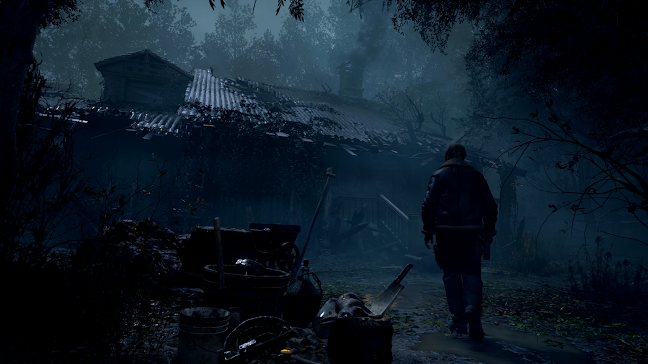W. Eugene Smith - Photographer of the Week
W. Eugene Smith
December 30, 1918 - October 15, 1978 (Aged 59)
Biography
Early Life:
William Eugene Smith was born Dec 30, 1918 in Wichita, KS. Smith had an early fascination with aviation. As a child, Smith wanted money for pictures of airplanes. Instead his mother lent him her camera and told him to take pictures at a local airfield. She helped him develop the film. By the time Smith was a teenager, photography had become his passion. He would take pictures of sports at his high school. Some of those pictures would be published in the Wichita Press. On July 25, 1934, The New York Times published a photo of a dried Arkansas River taken by Smith as part of a story on extreme weather events in the Midwest. He was a sophomore in high school at the time.
Early Career:
Smith attended the University of Notre Dame on a photography scholarship, but dropped out abruptly his freshman year at age 18 (1936). He then moved to New York City. Smith began working for Newsweek magazine in 1938 where he built a reputation as an abrasive perfectionist. He was fired from Newsweek for refusing to abandon the 35mm Contax camera he preferred for larger format negatives. Smith began to work for Life magazine in 1939.
War Correspondence:
In Sept 1943, Smith became a war correspondent for Ziff-Davis Publishing who supplied photos for Life magazine. Smith took photos of the Pacific Theater of World War II from the front lines. He went on to take photos of US Naval and Marine forces at Saipan, Guam, Iwo Jima and Okinawa. "You can't raise a nation to kill and murder without injury to the mind... It is the reason I am covering the war for I want my pictures to carry some message against the greed, the stupidity and the intolerances that cause these wars and the breaking of many bodies." Smith was seriously injured by mortar fire during the Battle of Okinawa, 1945.
Post War:
Smith didn’t take any photos after his injury until 1946, where he took a photo of his two children in the garden at his home, titled The Walk to Paradise Garden. Smith spent two years undergoing surgeries.
Midlife Career:
Between 1948 and 1954, Smith photographed a series of photo essays, of which laid the foundation of modern photojournalism. Encyclopedia Britannica described the period of Smiths work as “characterized by a strong sense of empathy and social conscience.” The most famous of these photo essays is Country Doctor, published by Life on Sept 20, 1948. Country Doctor followed Dr. Ernest Ceriani in Kremmling, CO for several weeks. The essay covered Ceriani’s arduous work in a sparsely populated area. The most vivid images came from when Ceriani performed a C-section operation where the mother and child died.
Jazz Loft Project:
In 1957, Smith left his wife and four children and moved into a loft space in Midtown Manhattan with three jazz musicians. Smith set up an intricate network of microphones to record and obsessively took pictures of jazz musicians who played at the loft. From 1957 to 1965, Smith recorded approximately 4,000 hours and took around 40,000 photos from the loft.
Minamata Photo Essay:
In 1970, Smith was invited by friends to go to Japan and cover the Minamata disease (a neurological disease caused by severe mercury poisoning). From 1971 to 1974, Smith and his new wife lived in Minamata. They created a long term photo essay on the effects of mercury poisoning caused by a factory discharging heavy metals into the water supply. In 1972, Smith was beaten up by representatives of the factory, badly damaging his eyesight. In 1975 the book Minamata was published, with one of Smiths most famous photos as the centerpiece, Tomoko and Mother in the Bath.
Late Life:
Smith and his second wife divorced after the Minamata project. He moved back to New York with a new partner in 1974, but his health was declining rapidly. In 1977, through the recommendation of friends, Smith moved to Tucson, AZ where taught in the Art and Journalism Departments at the University of Arizona. On Oct 15, 1978, Smith suffered a stroke and died.
Tomoko and Mother in the Bath
Smiths work could be argued to be the basis of modern photojournalism. His photography was always shot in back and white throughout his career, with careful consideration for light. But Smith took photos of moments when he could, prioritizing the subject material over the subject conditions. Very rarely did Smith take photos of his subjects posed. Almost all of his shots were candid. As the template for modern photojournalism his style has been imitated, so his photos may not be immediately recognized.
Sources:
Biography: Smith, W. Eugene. Let Truth be the Prejudice: W. Eugene Smith, His Life and Photographs. New York: Aperture, 1985.
Image: W. Eugene Smith, Tomoko in Her Bath, Minamata, Japan, 1972, gelatin silver print, Smithsonian American Art Museum, Transfer from the National Endowment for the Arts, 1983.63.1276


Comments
Post a Comment